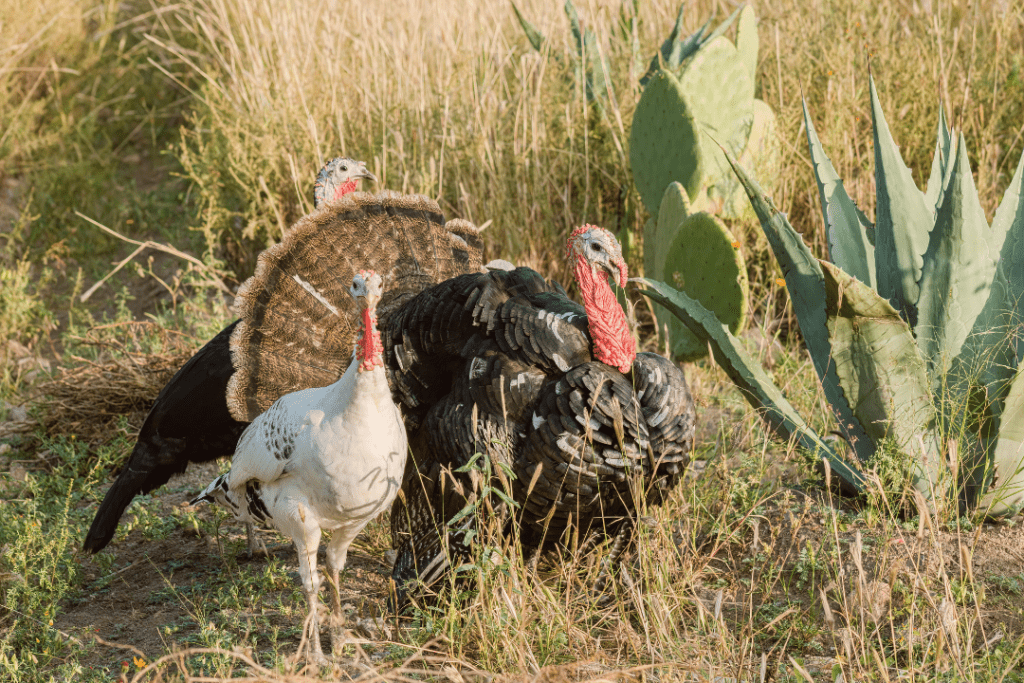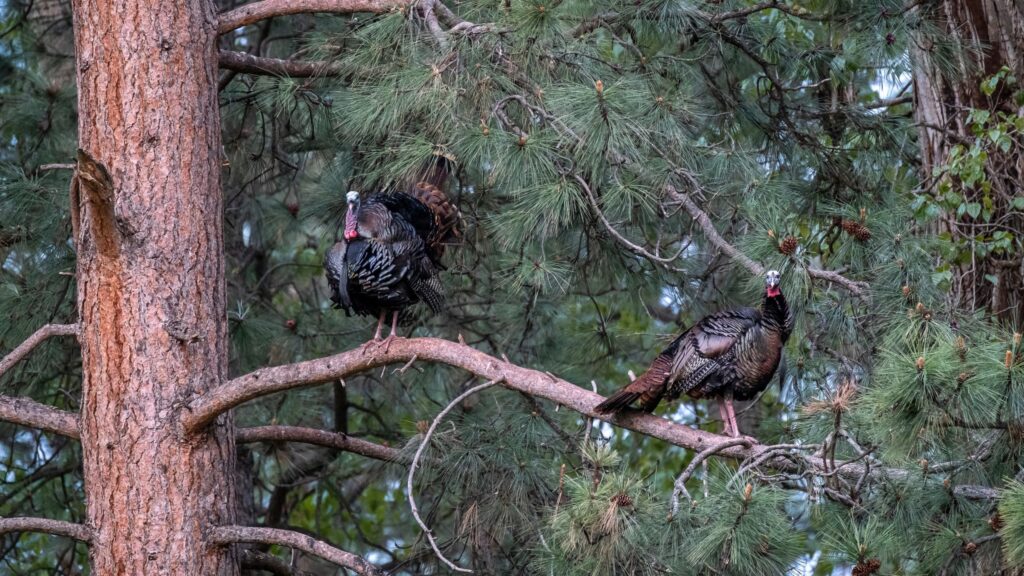As a passionate birder and blogger, I am excited to share my knowledge on the sleeping habits of turkeys in their natural habitat and in domestic environments. Turkeys are fascinating birds that are commonly associated with the holiday season, but few people know where they sleep or how they protect themselves while sleeping. In this article, I will provide a comprehensive guide to the natural habitat of wild turkeys, their sleeping habits, and how to build a safe and comfortable sleeping area for domestic turkeys.

Natural Habitat of Wild Turkeys
Wild turkeys are a common sight in wooded areas, forests, and grasslands throughout North America. As diurnal birds, they are active during the day and sleep at night. In this section, we will explore various aspects of wild turkeys’ sleeping habits, including where they sleep, what kind of trees they sleep in, and how they protect themselves while sleeping.
Do Turkeys Sleep In the Same Tree Every Night?
Turkeys do not sleep in the same tree every night. They often roost in different trees to avoid predators that may be watching them.
What Kind Of Trees Do Wild Turkeys Sleep In?
Wild turkeys prefer to roost in trees with thick branches and foliage that provide good cover. They usually choose hardwood trees such as oak, hickory, and maple.
How Do Wild Turkeys Get In Trees?
Wild turkeys use their powerful legs to jump into trees. They fly only short distances, usually from the ground to a nearby tree branch.
How Do Turkeys Sleep In Trees Without Falling?
Turkeys sleep on one leg with their heads tucked under their wings. This stance helps them balance and prevents them from falling off the tree branch.
Where Do Baby Turkeys Sleep?
Baby turkeys, or poults, roost on the ground or in low branches until they are strong enough to fly up to higher branches.
Where Do Wild Turkeys Sleep In Winter?
In the winter, turkeys may roost in conifer trees such as pine, spruce, and fir, which provide more protection from the elements.
By understanding the natural habitat and sleeping habits of wild turkeys, we can better appreciate these fascinating birds and their unique behaviors. The next section will explore the sleeping habits of domestic turkeys and how to provide them with a safe and comfortable sleeping area.
Sleeping Habits of Domestic Turkeys
Domestic turkeys, on the other hand, are bred and raised for consumption and live in controlled environments. Their living conditions can vary depending on the farm, but they are usually kept in large coops or barns. Domestic turkeys sleep in a similar way to wild turkeys. They prefer to roost on elevated surfaces to stay away from the ground and avoid predators.
Building a turkey roost is crucial to providing domestic turkeys with a safe place to sleep. A turkey roost should be built with sturdy materials and designed to prevent predators from accessing the sleeping area. A step-by-step guide on how to build a turkey roost that is safe and comfortable for your birds can be found further on in the blog!
How to Identify Sleeping Turkeys
Turkeys exhibit different behaviors when they are sleeping, making it easy to identify them. Sleeping turkeys will have their head tucked under their wing, and they will be standing on one leg. Turkeys may also make snoring sounds while they sleep.

Protecting Turkeys from Predators
Turkeys are vulnerable to many predators, including coyotes, foxes, and raccoons. Protecting your turkeys from predators while they sleep is essential to their survival. Fencing and predator-proof coops are effective ways to protect turkeys from predators. Fencing should be at least six feet high and buried at least one foot underground to prevent predators from digging under it. Predator-proof coops should be built with sturdy materials and designed to prevent predators from accessing the sleeping area.
Frequently Asked Questions
Turkeys are diurnal birds and sleep at night.
Turkeys sleep with their eyes closed.
Sleeping turkeys will have their head tucked under their wing, and they will be standing on one leg.
Turkeys can sleep alone or in groups depending on the circumstances. For example, during the winter, turkeys may sleep in groups to keep warm.
Turkeys typically sleep for about 8 hours per night.
Wild turkeys may sleep on the ground or in low branches when they are young, but they eventually learn to roost in trees.
While turkeys typically roost in trees at night, they may also sleep on the ground or in low branches when they are young.
Conclusion
In conclusion, understanding the sleeping habits of turkeys is important for their safety and well-being. Wild turkeys prefer to roost in trees with thick branches and foliage that provide good cover, while domestic turkeys should be provided with a safe and comfortable sleeping area to protect them from predators. Protecting turkeys from predators while they sleep is essential to their survival, and identifying sleeping turkeys is easy by observing their behaviors. By following the guidelines in this article, you can ensure that turkeys have a safe and comfortable place to sleep, whether they are in their natural habitat or domestic environments.

James has always been an avid outdoorsman. Since a kid, he kept a journal of all the different birds and species he saw. Now he wants to share his passion with other birders with Happy Birding!
